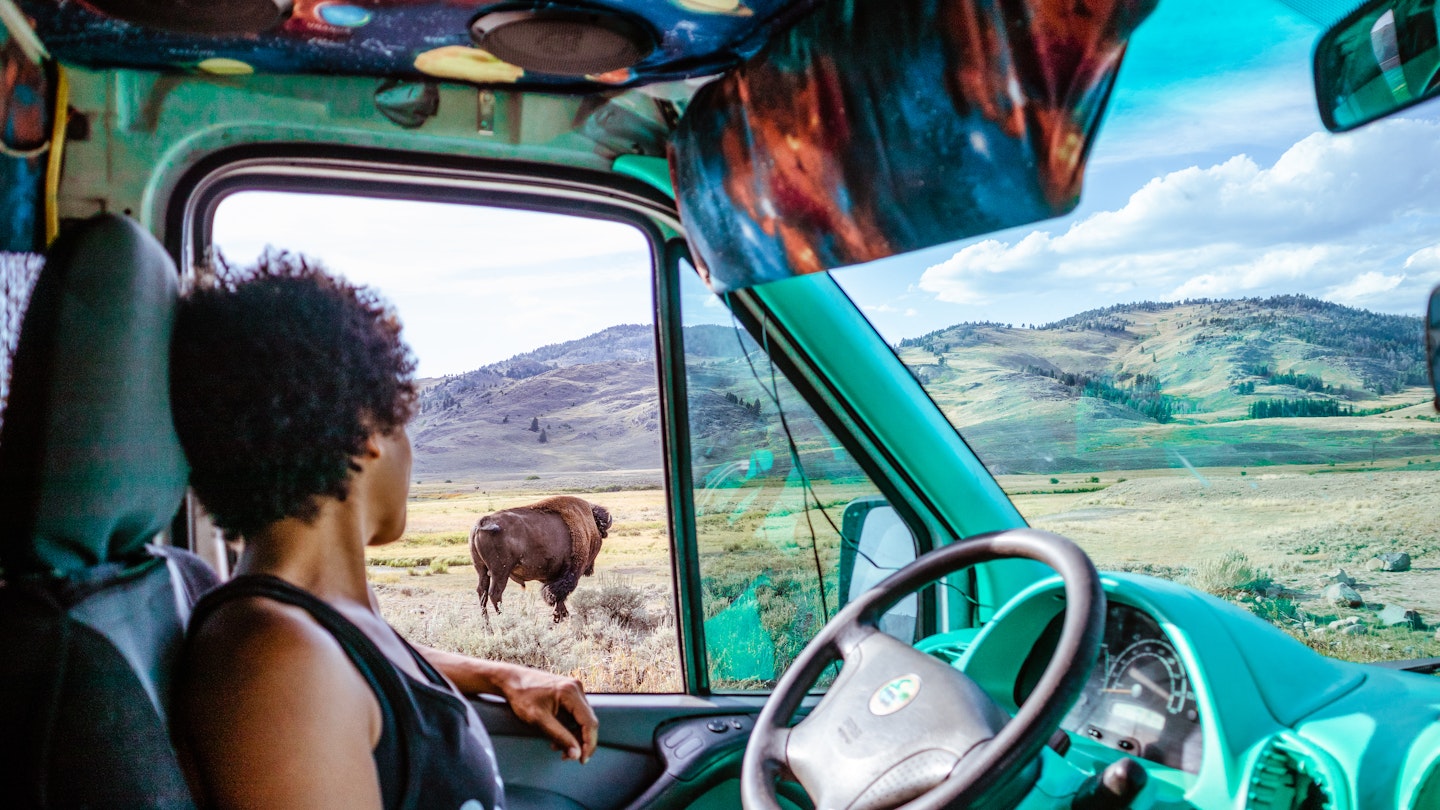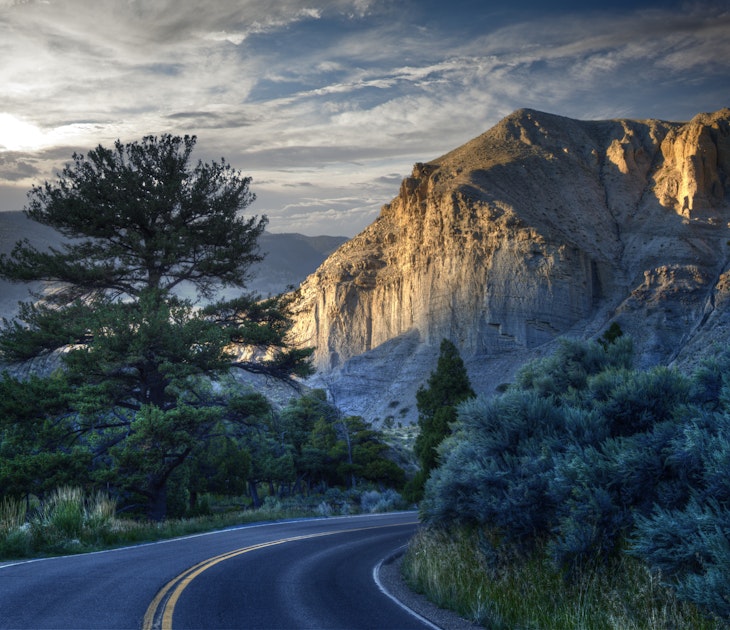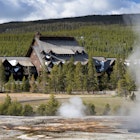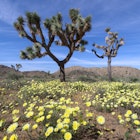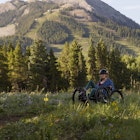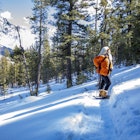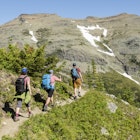There’s enough to do in Jackson Hole to keep you busy for weeks at a time – and most visitors use the valley as a home base to explore the wider area, too.
Two of America’s most famous national parks are within 60 miles of Jackson Hole, and the history of the American West feels omnipresent in the region. Here are the top four day trips for visitors to Jackson Hole.
Visit the Wild West town of Cody
Why go? To see a Western-movie fantasy come to life.
Founded in 1896 by William F. Cody, known to millions of 19th-century Americans as “Buffalo Bill” of the popular traveling Wild West show, Cody, Wyoming is essentially a Western film set come to life. Cody is surrounded on three sides by mountain ranges – the Absarokas, the Bighorns, and the Owl Creeks – and lies just 53 miles east of Yellowstone (practically next door in this part of the world). The town was developed to salute the lives of cowboys and mountain men; today, that Wild West fantasy feel still prevails.
Featuring five museums in one, the Buffalo Bill Center of the West introduces visitors to the life and times of the larger-than-life showman and offers an intimate look at life on the frontier. One of most enlightening and enlivening museums within the complex is the Plains Indian Museum, which houses a nationally recognized collection of art and objects created by the Crow, Blackfeet, Cree and other peoples whose land this region belonged to prior to colonization. Curated with the help of contemporary tribal historians, the museum seeks to be a living and ever-changing center of art and culture. One of the museum’s most fascinating exhibits is the interactive Plains Indian map project, which depicts the movements of more than 45 Indian tribes and cultures that made the American Plains home over a period of more than 230 years. Pause the animation at any point in the timeline to see how territorial, reservation and state boundaries changed as the result of colonization, treaties and flat-out land grabs.
At the Center’s Draper Natural History Museum, three lively interactive exhibitions bring the wildlife, geology and landscapes of the region to life. The Center’s other museums include the Cody Firearms Museum, which showcases the most comprehensive collection of American firearms in the world including the Winchester Arms Collection, and the Whitney Western Art Museum, housing a collection of 18th-, 19th- and 20th-century landscapes and depictions of life on the frontier, many of them fanciful and some presenting dated and disturbing interpretations of westward expansion and conflicts with the indigenous people who lived there.
A livelier introduction to life on the frontier comes with a visit to Old Trail Town and the Museum of the Old West, a collection of 26 log buildings brought together from various settlements, including blacksmith and woodworking shops; the cabin hideouts used by Butch Cassidy, the Sundance Kid, and their outlaw Hole-in-the-Wall Gang; and a barn full of pioneer wagons.
Those interested in the history of the Mormon pioneers who settled the Big Horn Basin will appreciate the Cody Mural and Museum, with a slightly surreal mural depicting the immigrants’ wagon trains and exhibits depicting the rugged life they faced upon arrival in the Big Horn Basin.
Cody Calls itself the Rodeo Capital of the World, and the culture of bull riding and calf roping is still alive and kicking here. The Cody Nite Rodeo, celebrating more than 80 years of operation, runs every night from June 1 through Labor Day weekend. Sheridan Avenue, Cody’s main street, continues the cowboy vibe with old-timey saloons and restaurants along with shops selling handmade saddles, cowboy boots, and silver jewelry.
No visit to Cody is complete without a visit to the Irma Hotel, opened seven years after the town’s founding and named for Cody’s youngest daughter Irma. Take a seat – and take in the ambiance – at the original cherrywood bar, gifted to Bill by his number one fan, Queen Victoria of England, who was entranced by his Wild West Show during her Golden Jubilee and began a lifelong friendship with the West’s greatest promoter.
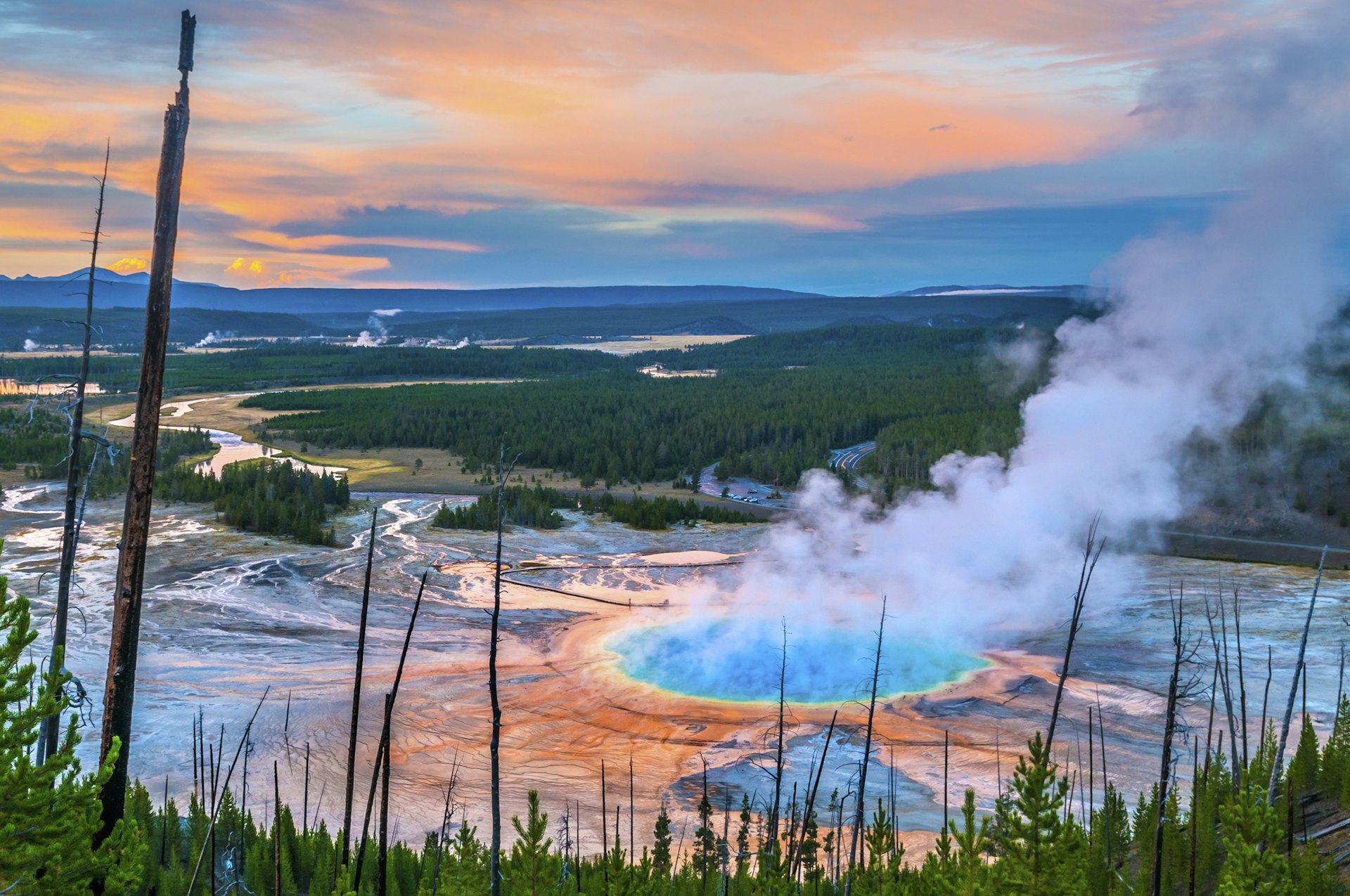
Tour Yellowstone National Park
Why go? To get up close and personal with one of world’s most fascinating wild places.
Rainbow-hued mineral springs, boiling mud pots, spouting geysers and spitting fumaroles: these geothermal mysteries lured 19th-century explorers to document a mysterious and dramatic landscape they described as a “hell.” These naturalists urged the government to preserve the area as Yellowstone National Park, establishing the national park system in the process.
Also designated a UNESCO World Heritage Site, Yellowstone preserves 10,000 hydrothermal features – more than half of all the geysers in the world. Among these, of course, is Old Faithful, the world’s most famous geyser, which erupts every one to two hours and sends water as high as 180 feet in the air. Underneath all of this, the geothermal forces that created Yellowstone continue to exert their power: scientists now believe Yellowstone sits atop one of the largest super volcanoes in the world, one that might be more active than previously thought.
While mud pots and geysers like Grand Prismatic Spring and Artist Paint Pots may provide you with your most spectacular photographs, there’s much more to do in the 2.2-million-acre park. See the Grand Canyon of the Yellowstone with its Upper and Lower Falls; marvel over the travertine terraces of Mammoth Hot Springs; and leave plenty of time to look for wolves in the meadows and moose in the forests and stop your car to yield to bison slowly crossing the road. As part of the commemoration of the 150th anniversary of the park’s founding in 2022, the National Park Service has instituted a process of engagement with the 27 associated tribes that maintain historical and cultural connections with the park, resulting in increased programming to celebrate indigenous history and culture in the area.

Explore Grand Teton National Park
Why go? To see the stunningly jagged peaks of the Teton range.
Almost contiguous with Yellowstone to the south, Grand Teton National Park is all about the Teton peaks and the best places to view and explore their jagged, snow-capped splendor. With most of the park’s must-see attractions strung along the north-south artery of Teton Park Road (open May through October only), many visitors make the mistake of stopping at a few viewpoints, then checking the park off the list. While you’ll certainly want to pull over at Albright View, Glacier View, Snake River Overlook and Willow Flats Overlook, all of which provide a different silhouette of white-capped Teton spires against the sky, the park has much more to offer.
Take a pause to picnic at Colter Bay on Jackson Lake and watch the fly fishers throw in a line along Oxbow Bend, but save your longest stop for Jenny Lake, where a ferry waits to whisk you across the water for the one-mile trail to Hidden Lake and Inspiration Point. If you’ve got enough time, skip the ferry trip back and return via the trail around the lake. Detour very slightly to Moose Pond and you just might catch the marshy waterway’s namesake foraging along the shore or even watching over a baby among the reeds.
A hike to a pristine mountain lake is among Grand Teton’s National Park’s great pleasures. An easy one for all ages is the 1.8-mile round trip to String and Leigh Lakes, which are peacefully off the radar of most park visitors. You’ll see more crowds on the five-mile trek to Bradley and Taggart Lakes, both popular with photographers for their mirror reflections of Grand and Middle Teton.
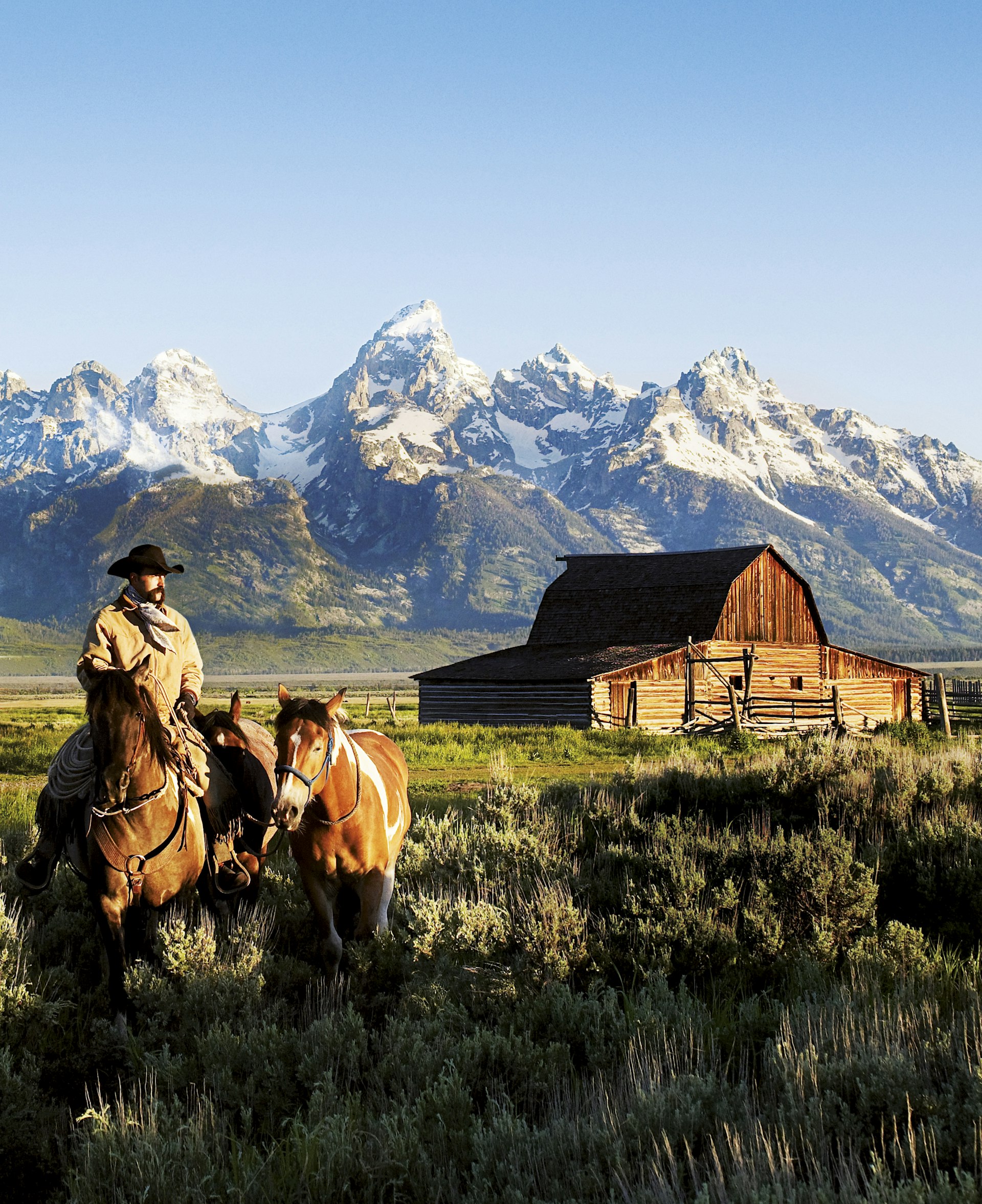
Visit Mormon Row and Lower Slide Lake
Why go? To photograph the bison.
Follow the Gros Ventre River northeast from Jackson through the lush Antelope Flats to reach Lower Slide Lake in the Bridger-Teton National Forest. A short detour north takes you to Mormon Row, a historic site within the bounds of Grand Teton National Park that was once the settlement of Grovont. Today, all that remains are a handful of homesteads featuring picturesque barns whose rugged loneliness against the backdrop of the mountains makes them sought-after by photographers. A herd of more than 700 bison calls this valley home, so your chances of a good photograph of the beasts are high.
Another 30 minutes in the car takes you to Lower Slide Lake, where a boat ramp offers easy access for kayaks, canoes, paddle boards and row boats. Stocked with trout for those eager to fish, the lake is stunning in the fall when the cottonwoods and aspens ring the shore with gold. A short interpretive trail explains local geology, in particular the massive landslide that formed the lake. Continue along and past the lake to find several pretty campgrounds and numerous trailheads providing access to the surrounding Bridger-Teton National Forest.
You might also like:
The 12 best day trips in the Rocky Mountains
How to choose the best ski pass this winter
This luxury train lets you see the Rocky Mountains in a whole new way

